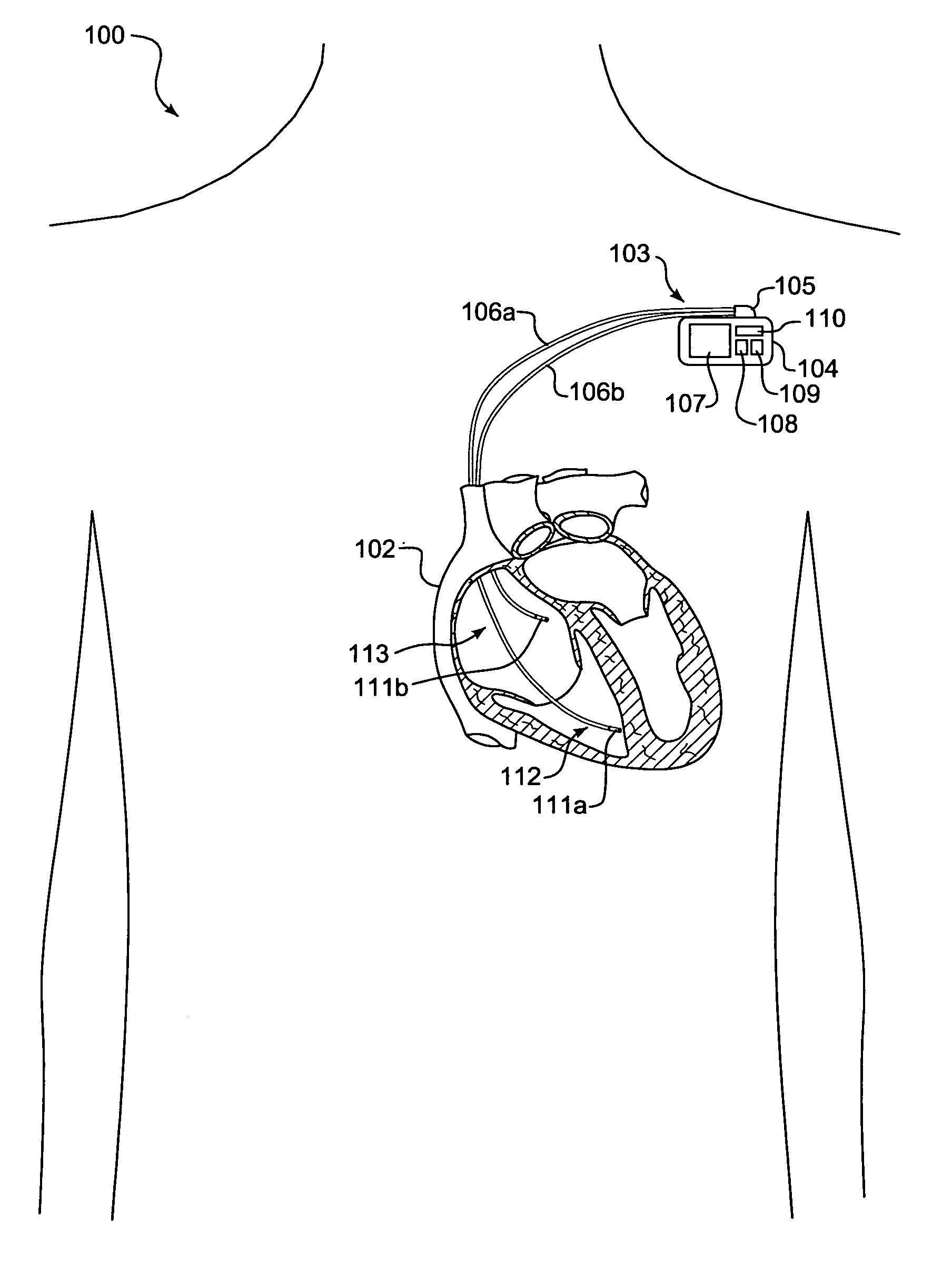System and method for assessing cardiac performance through transcardiac impedance monitoring
a technology of impedance monitoring and cardiac performance, applied in the field of cardiac performance assessment, can solve the problems of heart failure, inability to meet the metabolic demands of the body, and difficulty in regularly obtaining and evaluating lvef and lvedp for cardiac performance assessmen
- Summary
- Abstract
- Description
- Claims
- Application Information
AI Technical Summary
Benefits of technology
Problems solved by technology
Method used
Image
Examples
Embodiment Construction
Internal Transcardiac Impedance Monitoring System
[0029]FIG. 1 is a schematic diagram 100 showing an implantable medical device (IMD) 103 monitoring transcardiac impedance, in accordance with a further embodiment of the present invention. The IMD 103 is surgically implanted in the chest or abdomen of a patient and consists generally of a housing 104 and terminal block 105. The IMD 103 is coupled to a set of leads 106a-b at the terminal block 105. During surgery, the leads 106a-b are threaded through a vein and placed into the heart 102 with the distal tips of each lead 106a-b positioned in direct contact with tissue inside the heart 102.
[0030]The housing 104 contains a battery 107, control circuitry 108, memory 109, and telemetry circuitry 110. The battery 107 provides a finite power source for the IMD components. The control circuitry 108 samples and processes raw data signals and includes signal filters and amplifiers, memory and a microprocessor-based controller, as would be appre...
PUM
 Login to View More
Login to View More Abstract
Description
Claims
Application Information
 Login to View More
Login to View More - R&D
- Intellectual Property
- Life Sciences
- Materials
- Tech Scout
- Unparalleled Data Quality
- Higher Quality Content
- 60% Fewer Hallucinations
Browse by: Latest US Patents, China's latest patents, Technical Efficacy Thesaurus, Application Domain, Technology Topic, Popular Technical Reports.
© 2025 PatSnap. All rights reserved.Legal|Privacy policy|Modern Slavery Act Transparency Statement|Sitemap|About US| Contact US: help@patsnap.com



